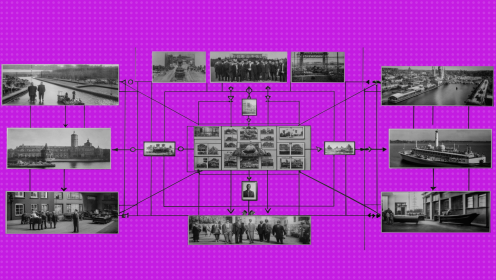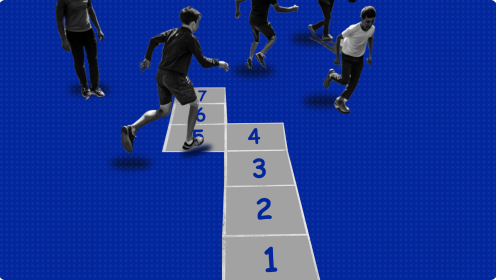Modern life is full of distractions, which kill productivity and impact, and goals are my way of avoiding distraction.
Paul Adams
Vice-president of product at Intercom and former product manager for Facebook and Google — Paul Adams, has spoken about the difference between goals and tasks and their correct setting on his blog:
I am a big believer in setting goals. Throughout my career I’ve learned that when I set myself goals and stick to them, my performance really improves. I’ve also seen this in others that I’ve worked with, time after time.
How do goals help you achieve results?
1. Goals make you focus
When you are dragged into email or Slack, or you begin to reply to tasks as they appear — having goals in front of you returns the focus for the right priority. This greatly improves productivity.
2. Goals endorse self-competition
The competitive spirit always makes you strive harder for results. Having no opponent to compete with, kills the internal “winner”. Goals help you compete with yourself and stay active.
Goals and tasks: How to treat them right?
The degree of goal achievement largely depends on the correctness of its setting.
The most common mistake: setting tasks instead of goals.
The goals are strategic, they are aspirations. Tasks are tactical. Tasks would be set and achieved in any case in order of fulfilling the goals.
Goals are focused on progress, not events. So, goals tend to have a much greater impact on people. People often set more tasks than they can accomplish, so if you engage in fulfilling tasks rather than goals, then you will only become very busy, not successful.
Let's take a look at some of the examples of bad goals and their better alternatives.
Goal 1. Share a project approvement process.
This is the task. It does not require long-term achievement. By setting such a goal, your final focus will be on closing the task rather than on achieving its result.
Better alternative: Make sure everyone in the team understand new project approvement process.
That's a lot better! This is the goal. It extends beyond the scope of the simple presentation task and is aimed at achieving a positive result in a specific time frame.
Goal 2. Have a talk with Julia about the new design.
Arrange a meeting, and the goal is achieved. This goal does not encourage any of the participants to focus on the process.
Better alternative: Get a new designed approved by Art Director and Product Owner.
Goal 3. Interview with John about the open product manager position
An interview is a task. The meeting is already planned. You will meet, it will definitely happen. And at the moment when John will sit down to chat with you, the task will already be completed.
Better alternative: Close the product manager position by the end of the week or prepare a lead generation plan
Now there is a desire to achieve the goal. We need to be creative in order to find ways to achieve the goal, and not just perform an action.
Take the time to set the right goals
It is very important to understand that you will not achieve your goals until you sit down and take the time to formulate and set them. Without working out the goals, you are likely to just do one task after another. Permanent busyness nightmare and low efficiency are guaranteed.
The larger your company and team, the more time you need to devote to the correct goal setting. Otherwise, the amount of routine will continue to increase, in the absence of rapid progress. You simply will not bring great results to your company.
Setting the right goals is just as important as automation. After all, both of them serve the same purpose and even, to some extent, have similar logical mechanics. Ultimately, everyone will benefit from correctly set goals: you, your employees and most of all — your company.

















